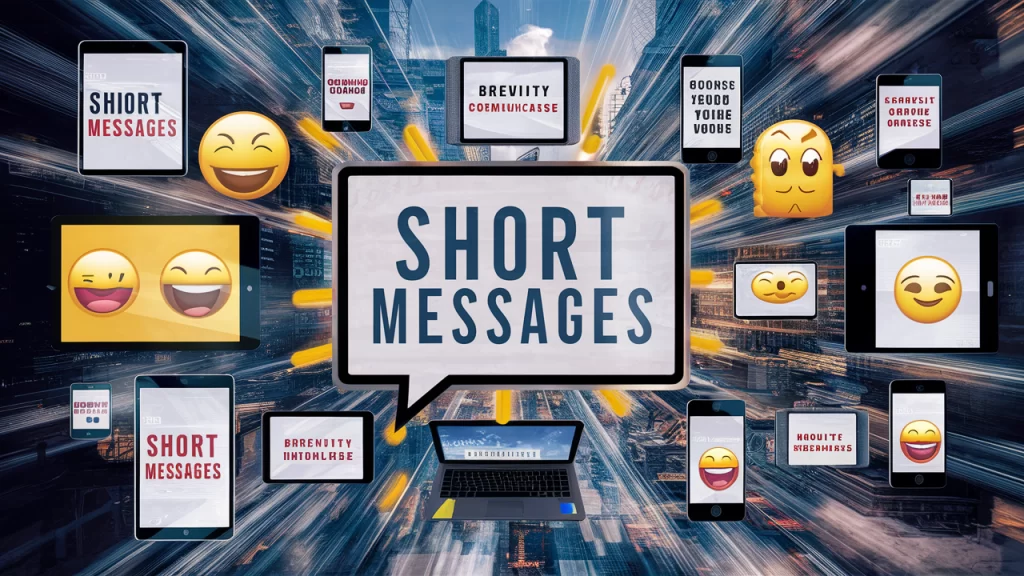Table of Contents
Effective communication is more important than ever in the fast-paced world of today. Whether it’s a lengthy email or a quick text, how we convey our messages can make all the difference. But which is better: long volumes or short messages? Understanding the balance between the two can help you master the art of assertive communication, ensuring your words always hit the mark. Choosing between long volumes or short messages can shape how your message is received and interpreted. As we dive into this topic, you’ll discover when to use long volumes or short messages to enhance your communication skills.
The Benefits of Long Volumes

Long volumes of communication, such as detailed emails, reports, or articles, allow for thorough expression of ideas. Longer messages are ideal when explaining a complex concept or providing in-depth information. Understanding the situations where long volumes are more effective is critical to mastering communication. Here’s why long volumes can be your best ally:
Detailed Explanations
Long messages give you the space to elaborate on your thoughts. Dealing with complex topics allows you to break down information step by step, ensuring your audience fully understands your point. The ability to dive deep into a subject with long volumes ensures that nothing is left out, providing a complete picture for your audience. Whether you’re writing an in-depth report or explaining a complex concept, long volumes offer the necessary room for detailed explanations.
Building Trust
When you take the time to write in detail, it shows your commitment and effort. This can help build trust with your audience, as they see you’re willing to go the extra mile to communicate clearly. People often perceive long volumes as more thoughtful and thorough, which can enhance your credibility and trustworthiness. In professional settings, using long volumes can demonstrate your dedication and expertise on the subject matter.
Providing Context
In situations where context is critical, long volumes allow you to provide background information, examples, and scenarios that help your audience see the bigger picture. Providing the proper context ensures that your audience fully grasps the importance of your message. Whether discussing a business proposal or laying out a plan, long volumes give you the space to cover all necessary angles.
The Power of Short Messages

While long volumes have their place, short messages are equally powerful, especially in today’s digital age, where attention spans are shorter. Short messages can be just as impactful, mainly when time is of the essence. Here’s how short messages can be incredibly effective and why they shouldn’t be underestimated:
Clarity and Precision
Short messages force you to be clear and to the point. This helps avoid confusion or misunderstanding, as your audience receives the information they need without fluff. The clarity and precision of short messages ensure that your audience gets the key points quickly and efficiently. Short messages can be more impactful than long volumes when you need to communicate quickly and effectively.
Time-Saving
Short messages respect your audience’s time in a world where time is precious. Whether it’s a quick text or a brief email, getting to the point quickly can be more impactful than lengthy explanations. Short messages save the sender and receiver time, making communication more efficient. In fast-paced environments, short messages allow for quick decision-making and action.
Enhancing Engagement
Short messages are easier to digest and more likely to be read in full. This can lead to better engagement, as your audience is more likely to respond to and remember your message. The brevity of short messages makes them more appealing, increasing the likelihood that your audience will engage with the content. In the digital age, where information overload is common, short messages can cut through the noise and capture attention.
When to Use Long Volumes or Short Messages
Knowing when to use long volumes or short messages is critical to mastering communication. The right choice depends on your communication’s context, audience, and purpose. Your situation’s specific needs should guide your decision.
Consider the Audience
Understanding your audience is the first step. For example, long volumes might be more effective if you communicate with someone who prefers details. On the other hand, if your audience values brevity, short messages could be the way to go. Tailoring your communication style to your audience’s preferences, whether through long volumes or short messages, ensures that your message resonates with them. Considering your audience’s expectations will help you decide whether long volumes or short messages will be most effective.
Purpose of the Message
The purpose of your communication should also guide your choice. If you’re providing instructions or feedback, long volumes might be necessary. Short messages are more appropriate if you confirm a meeting time or send a quick update. The goal of your message—whether it’s to inform, persuade, or instruct—will dictate whether long volumes or short messages are the better choice. Clarifying your message’s purpose will help you determine the best approach.
Context and Setting
The context of your communication also matters. Long volumes might be expected in formal settings, while short messages are usually more appropriate in informal settings. The setting of your communication, whether a business meeting or a casual conversation, will influence whether you should use long volumes or short messages. Context is crucial in determining your message’s appropriate length and style.
Also Read: Elephant Pig Hybrid NYT: The Shocking Discovery Everyone’s Talking About
Combining Long Volumes and Short Messages
Sometimes, the best approach is to combine long volumes and short messages. This allows you to leverage both benefits, creating a balanced and effective communication strategy. By combining long volumes and short messages in your communication efforts, you can achieve the best of both worlds.
Start with a Short Message
You can begin with a brief overview or summary that captures the main points. This grabs your audience’s attention and prepares them for future details. Starting with a short message can provide a clear introduction, making it easier for your audience to grasp the key points before diving into long volumes.
Follow with a Long Volume
After the initial short message, you can dive into the details with a more extended volume. This ensures that your audience understands the full context while respecting their time. Following up with long volumes allows you to expand on the short message, providing thorough explanations and background information.
Recap with a Short Message
Finally, you can end with a short recap. This reinforces the key points and leaves your audience with a clear takeaway. Recapping with a short message helps to solidify the main ideas presented in the long volumes, ensuring that your audience walks away with a clear understanding.
In the end, mastering the art of communication means knowing when to use long volumes or short messages. By understanding the strengths of each and how to apply them, you can ensure your messages are always transparent, impactful, and effective. Whether you’re writing an email, sending a text, or giving a presentation, remember that the right approach can make all the difference—whether through long volumes or short messages.
Using long volumes or short messages wisely lets you communicate powerfully, leaving a lasting impression on your audience. When you master the balance between long volumes or short messages, your communication will become more effective and resonate more deeply with your audience.




